Core X: Core Routine for Runners
Building a strong core is essential for runners, not only to improve performance but also to prevent injuries and enhance overall stability. I’m Jay Johnson, and I want to share with you an effective, straightforward core strengthening routine called Core X. Designed specifically with runners in mind, Core X consists of 10 exercises, each lasting 30 seconds, making it a quick and efficient 5-minute workout you can easily add after your runs.

Why Core Strength Matters for Runners
The core is the central link between your upper and lower body, and it plays a crucial role in maintaining proper running form and balance. A strong core helps you maintain good posture, reduces fatigue, and improves your ability to transfer power efficiently from your legs through your torso. Many runners tend to focus primarily on their legs and neglect core training, but incorporating a dedicated core routine like Core X can significantly elevate your running game.
This routine is simple yet effective, targeting both the anterior chain (front of the body) and the posterior chain (back of the body). Strengthening these muscle groups ensures balanced development and reduces the risk of overuse injuries.
Core X Routine Overview
Core X features 10 exercises, each performed for 30 seconds, totaling just 5 minutes. The exercises include a mix of dynamic and static movements designed to engage different parts of the core, including the obliques, lower back, hip flexors, and abdominal muscles. The routine is demonstrated by two strong athletes, Macklin Chaffee and Nikki Cod, who showcase proper form and intensity.
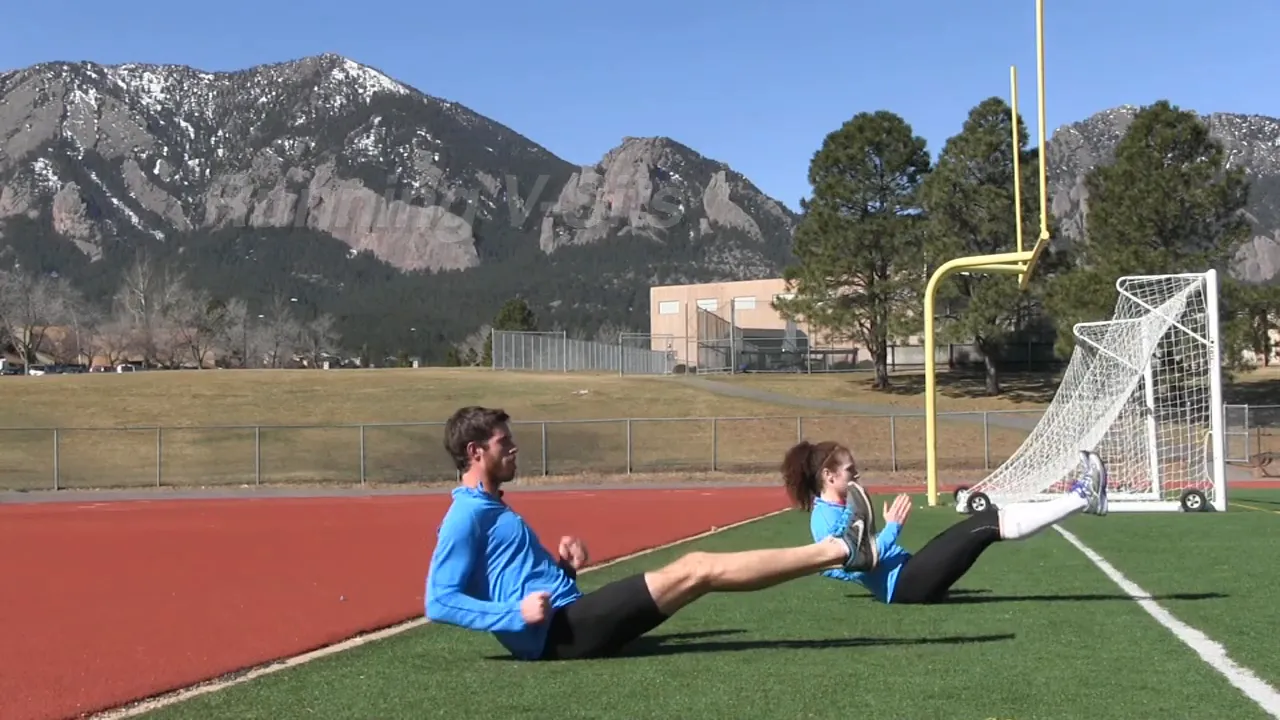
1. Running V-Sits
The first exercise is the running V-sit. The goal is to maintain this posture while vigorously pumping your arms as fast as possible. Macklin demonstrates excellent form by keeping a sharp V angle and moving his arms intensely.
For many, achieving the perfect V shape might be challenging at first—you may find yourself a bit flatter or leaning back more. That’s perfectly fine. The key is to engage your core and move your arms rapidly while maintaining as much of the V posture as possible.
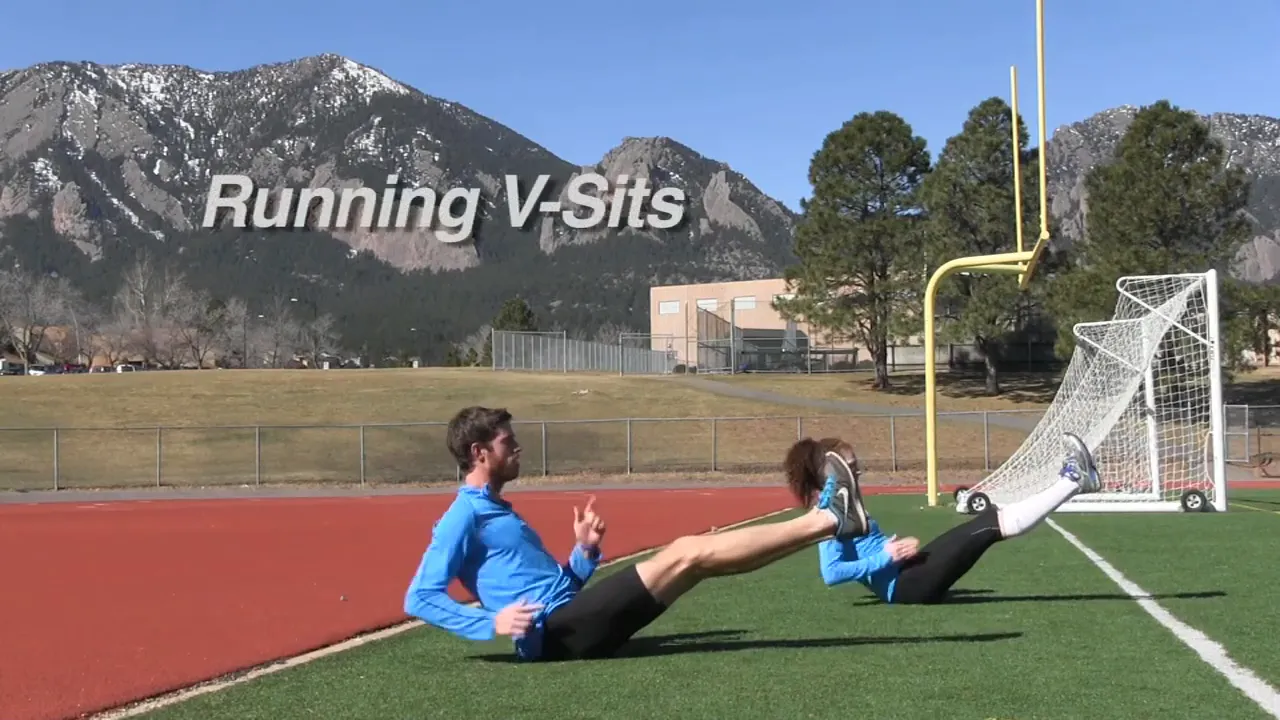
2. Australian Crawl
Next is the Australian crawl, a simple exercise that resembles swimming on your stomach. Here you move your arms and legs simultaneously, engaging your entire posterior chain—the muscles along your back, including your lower back, glutes, and hamstrings. These muscles are often undertrained compared to the anterior chain, so this exercise helps balance your core strength.
By mimicking swimming motions, the Australian crawl activates your back muscles and improves coordination between your limbs, which is essential for efficient running mechanics.
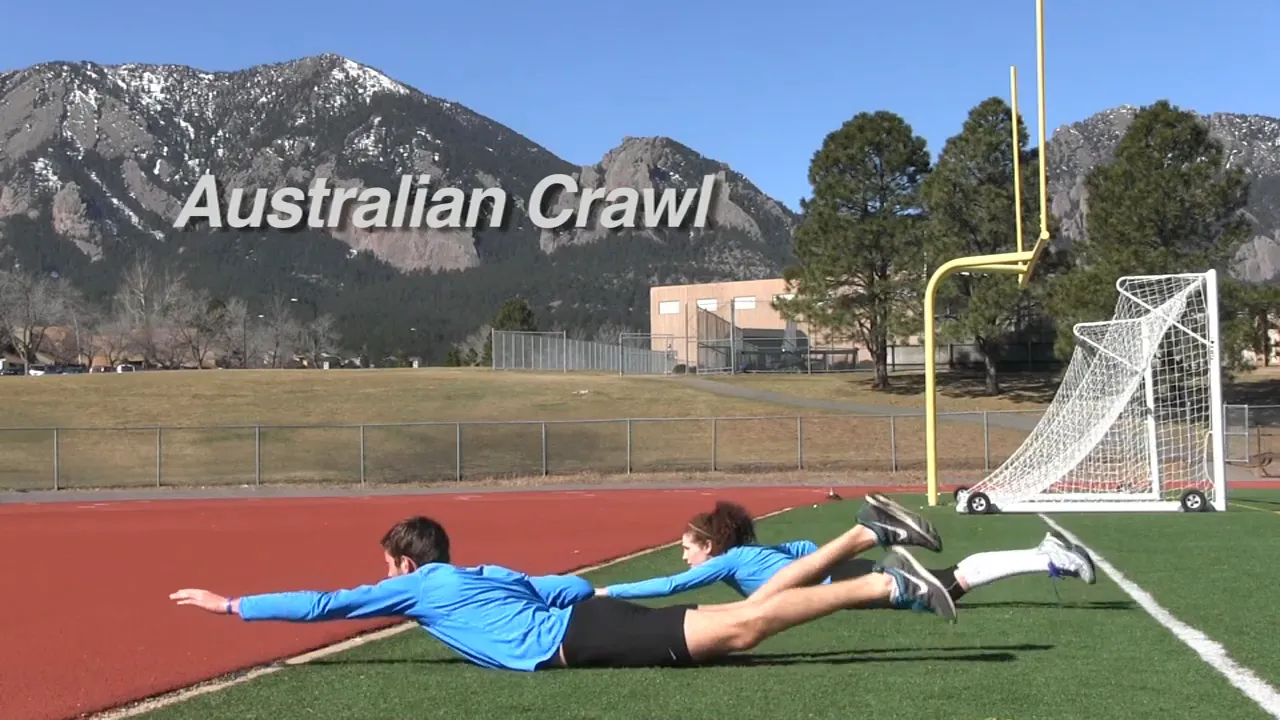
3. V-Sit Flutter Kicks
Following the crawl, you’ll perform flutter kicks while holding the V-sit position. In this exercise, your arms remain still, but your legs move up and down rapidly in a fluttering motion. This is a challenging exercise that targets your lower abdominal muscles and hip flexors.
While Macklin and Nikki make it look easy, beginners might find themselves leaning back more or having a flatter V angle. That’s normal—focus on maintaining core engagement and gradually increasing your endurance with practice.

4. Side Plank with Leg Lifts
Next is the side plank with leg lifts. This move targets your obliques and hip abductors, which are crucial for lateral stability in running. Holding a side plank position, you lift your top leg slowly and steadily for the entire 30 seconds.
One important tip is to perform the leg lifts at a slow, controlled pace rather than rushing through them. Slow movements increase time under tension, making the exercise more effective and challenging. Macklin and Nikki demonstrate great posture, showing how to keep your body aligned and hips lifted.
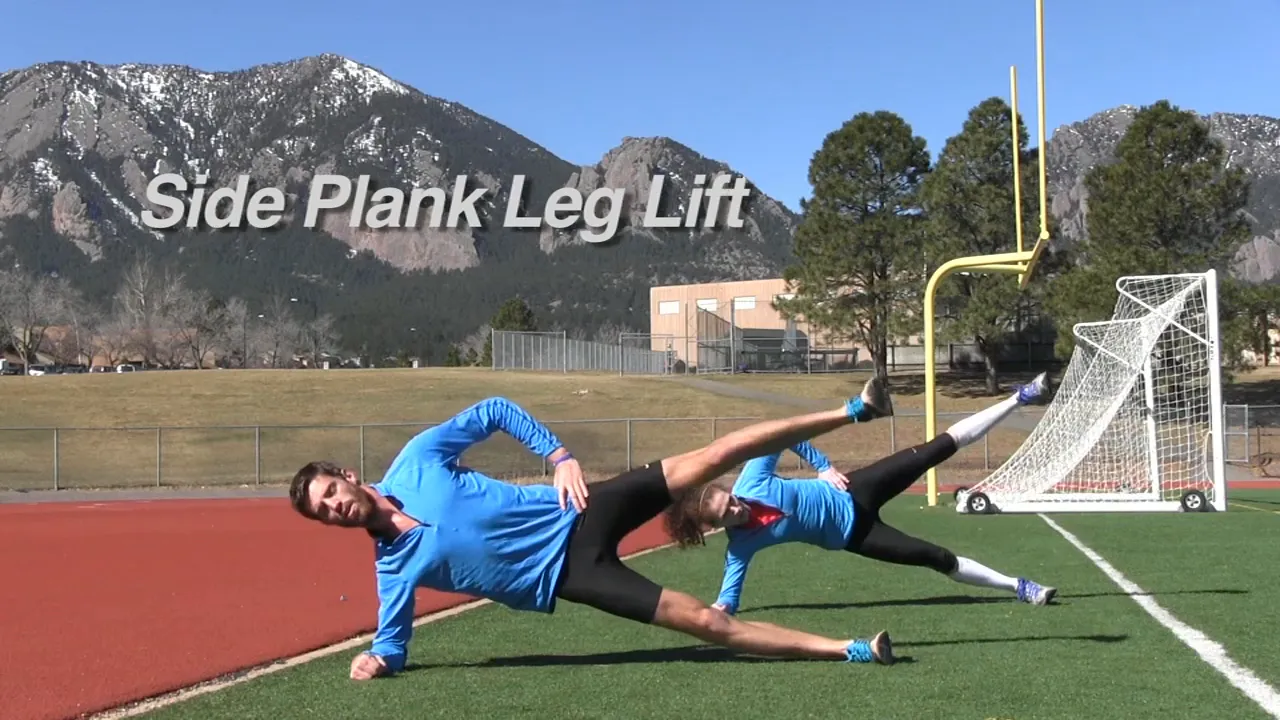
5. Supine Plank with Leg Lifts
The fifth exercise is a supine plank with leg lifts. Lying on your back, you lift one leg at a time while maintaining a straight line from your heels to your shoulders. This exercise activates your glutes, hamstrings, and lower abs.
Maintaining hip height is critical here; it’s easy to let your hips drop, which reduces the exercise’s effectiveness. Both athletes keep their hips almost perfectly aligned, highlighting the importance of form. Expect your hamstrings to start burning toward the last 10 seconds of this move—it’s a sign you’re working hard!
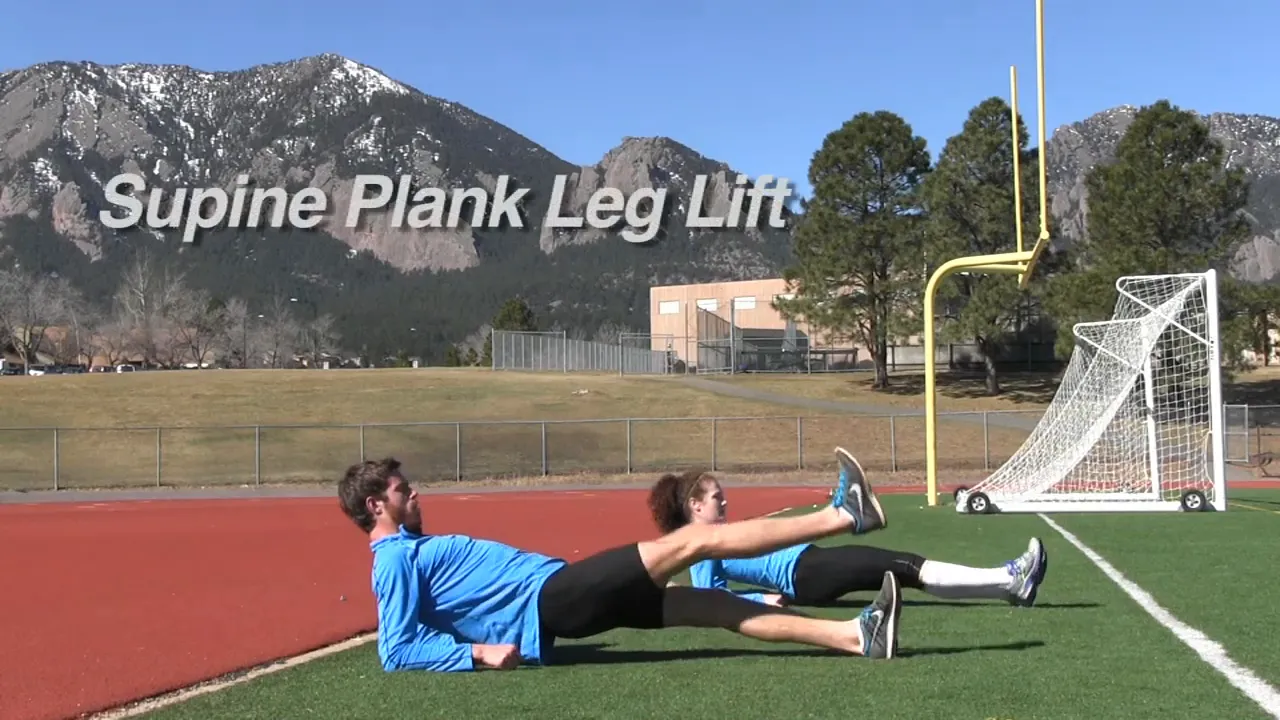
6. Side Plank Leg Lift (Opposite Side)
To balance your workout, repeat the side plank leg lifts on the opposite side. Remember which side you started with so you can even out the work. Maintaining symmetry in your core training prevents muscular imbalances that can lead to injury.
Side note: This routine was filmed at Fairview High School in Boulder, Colorado, with the stunning Bear Peak visible in the background—a reminder of the beautiful environments that running and training can take us to.

7. Superman Hold
The Superman exercise focuses on strengthening the posterior chain, especially the lower back. Lie face down and lift your arms, chest, and legs off the ground, holding the position for about 1.5 seconds before lowering for half a second.
If you feel any discomfort or stress on your lower back, it’s okay to skip this exercise. But for many runners, the Superman is a fantastic way to build resilience and strength in the muscles that support your spine and hips.
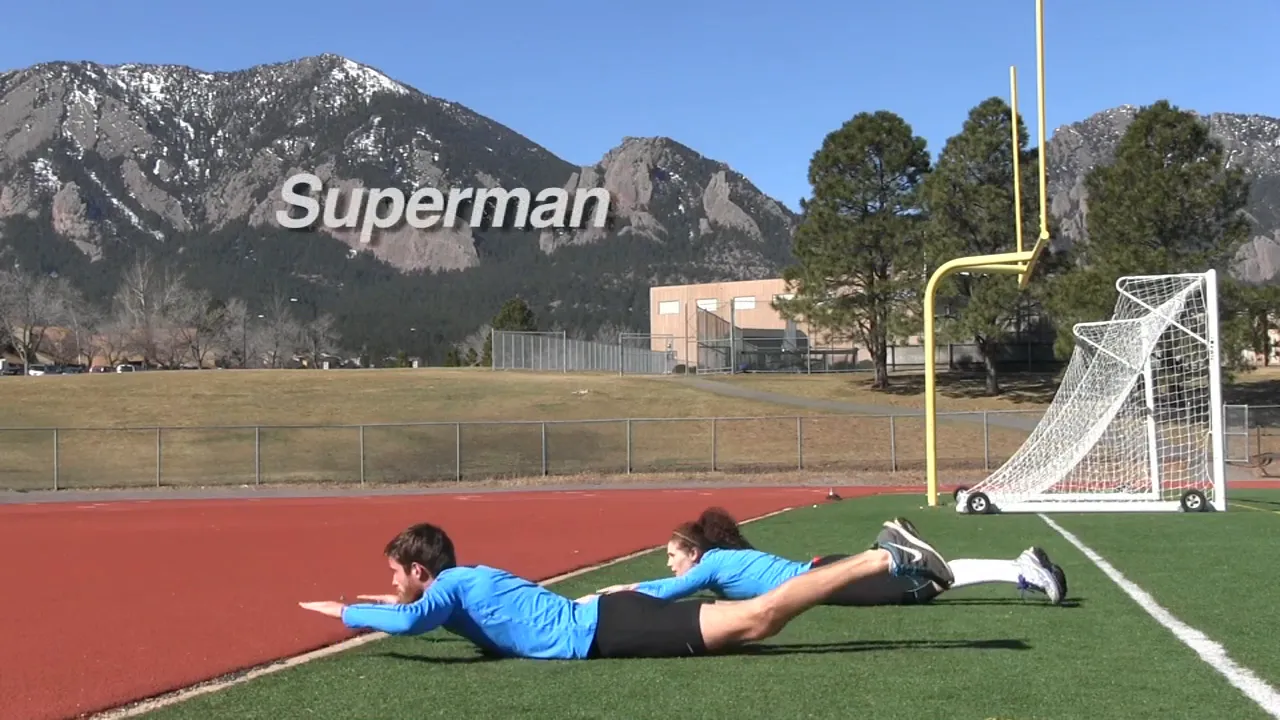
8. Push-Up into Side Plank
This dynamic move combines upper body strength and core stability. Start with a push-up, then rotate your body into a side plank. Your feet will naturally rotate as you transition, and it’s fine to keep them about a foot apart for better balance.
This exercise challenges your shoulders, chest, and obliques simultaneously, making it a great compound movement. Watching the demonstration, it looks smooth, but when you try it yourself, expect to feel the challenge.
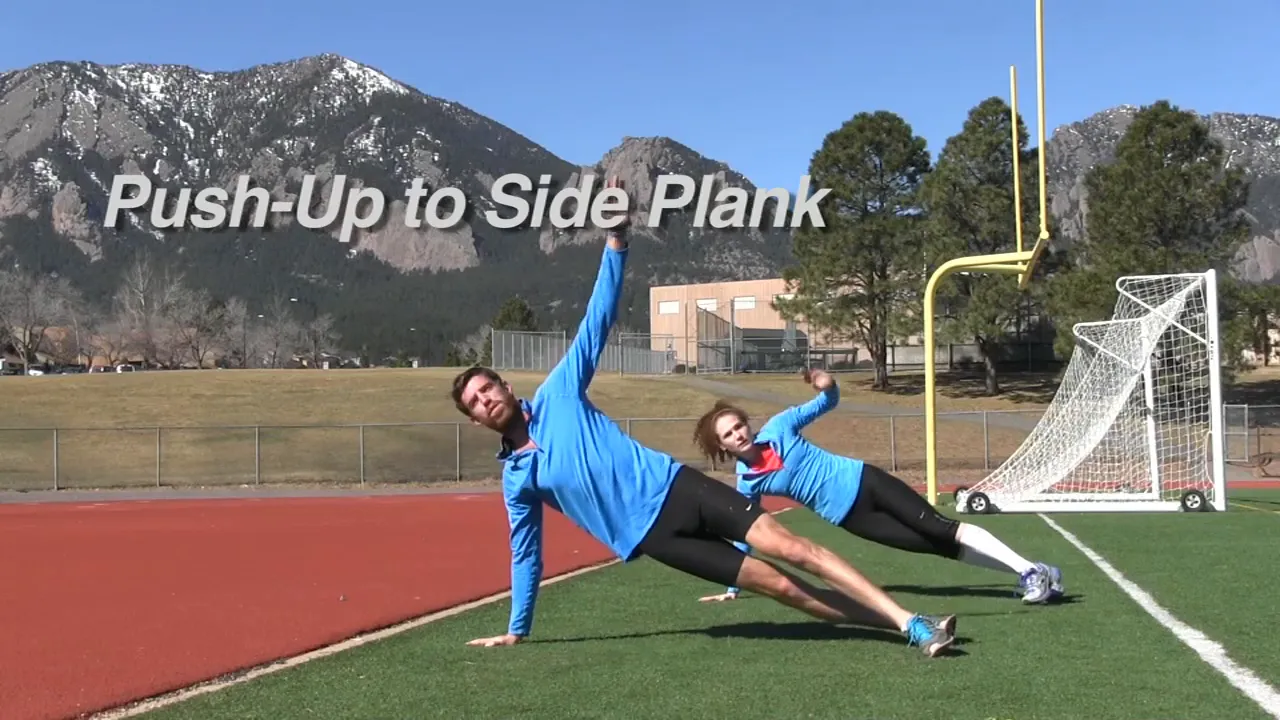
9. V-Sit Scissors
Returning to the V-sit position, this time you perform scissors with your legs, moving them side to side. It’s similar to the flutter kicks but adds a lateral movement component, engaging your core muscles in a different plane.
Macklin and Nikki hold the V-sit posture steadily while executing the scissors smoothly. This exercise develops endurance and coordination in your hip flexors and lower abs.
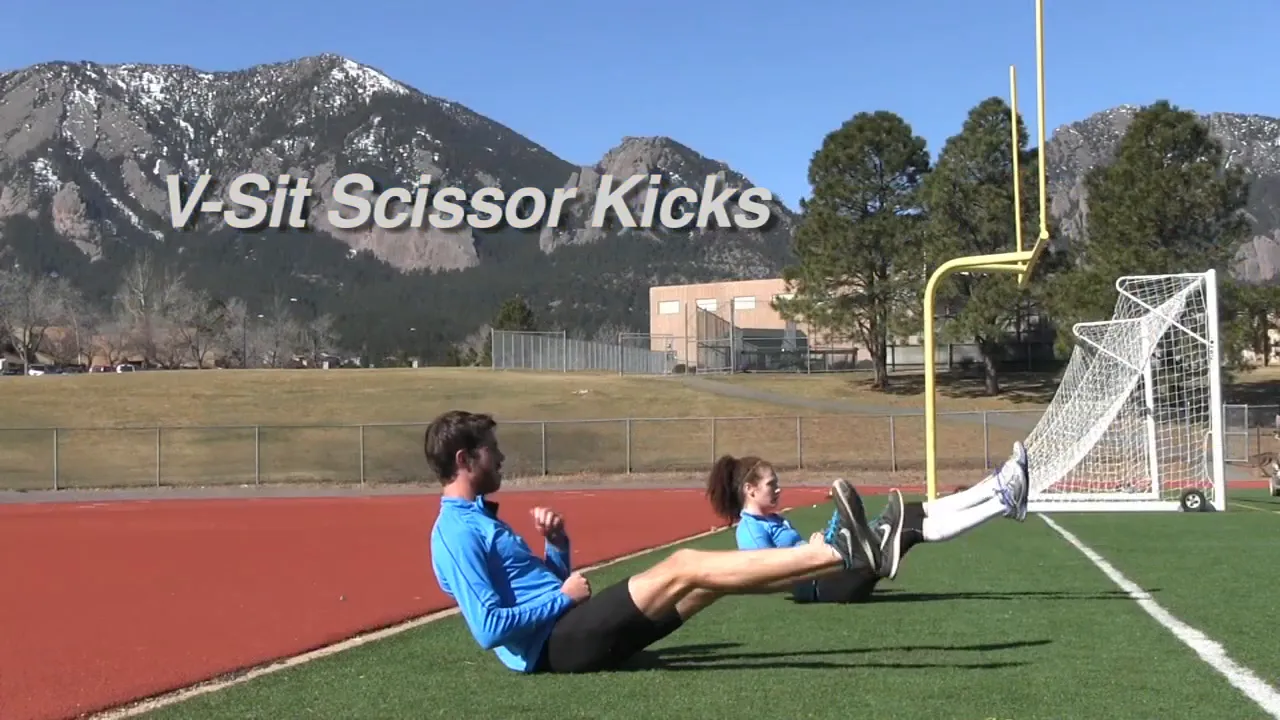
10. Rockies (Push-Up with Clap)
The final exercise is the Rockies, essentially a push-up with a clap at the top. This plyometric move builds explosive upper body power and coordination. Perform sets of three reps, resting between sets, and aim for three sets of three.
Most runners with a decent upper body strength base should be able to complete this. It’s a fun way to finish the routine on a high-energy note.
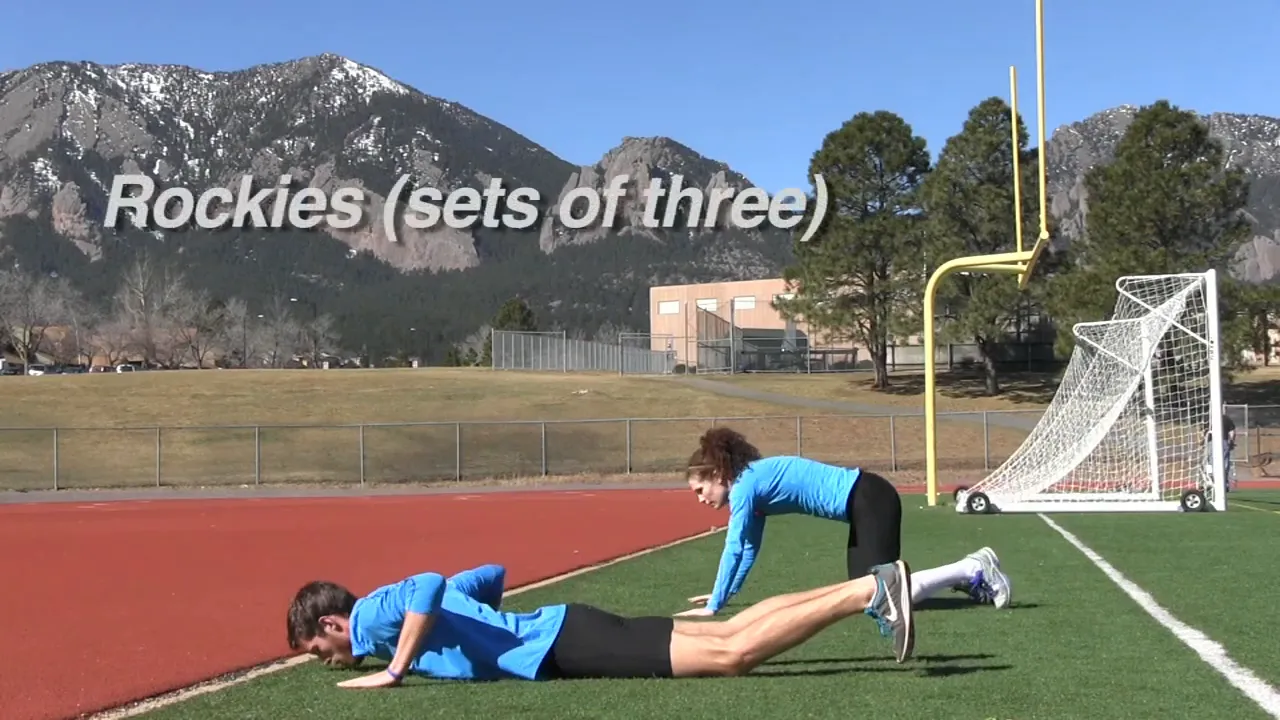
Putting It All Together: Why Core X Works
Core X is a concise yet comprehensive routine targeting all major core muscle groups important for runners. It balances anterior and posterior chain work, static holds, and dynamic movements to build strength, endurance, and stability.
One of the best features of Core X is its simplicity and short duration. At just 5 minutes, it’s easy to fit into your post-run cooldown or any time you want to maintain a strong core without dedicating a lot of time.
Tips for Success with Core X
- Focus on form: Quality over quantity. Maintaining proper posture ensures you target the right muscles and prevent injury.
- Control your pace: Slow, deliberate movements, especially in exercises like side plank leg lifts, increase the challenge and effectiveness.
- Balance both sides: Always perform side exercises on both left and right to avoid imbalances.
- Listen to your body: Skip or modify exercises like Superman if you feel lower back discomfort.
- Be consistent: Practice Core X regularly to build lasting core strength that supports your running.
Additional Resources for High School Running Coaches
I developed this routine over a decade ago, primarily for adult runners. If you're an adult runner, this is something you can do after your workout days and after your long runs. However, I now use this primarily with high school athletes, though indirectly - I coach coaches rather than the athletes themselves.
If you're a high school coach interested in taking your program to the next level, check out my comprehensive training systems:
These systems provide structured, progressive approaches that incorporate the principles discussed in my articles - from extending the aerobic stimulus to proper strides progression to chassis strengthening work.
For parents of high school runners or coaches looking for foundational knowledge, my book Consistency Is Key: 15 Ways to Unlock Your Potential as a High School Runner offers crucial insights into developing successful young runners. You can get six free chapters by signing up on my website.













